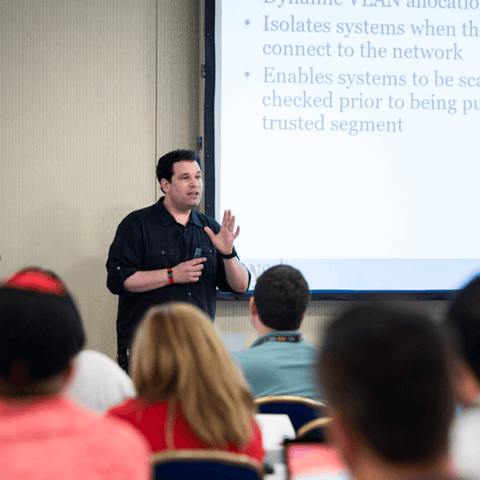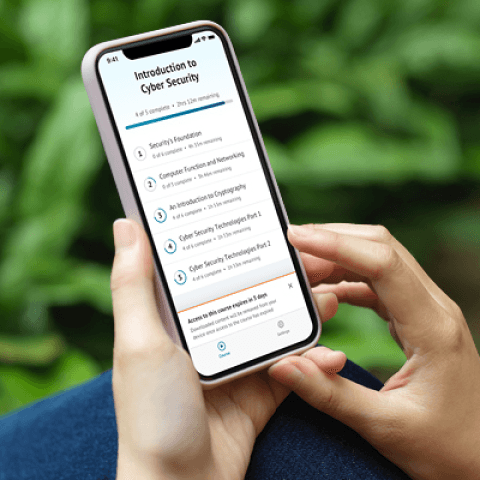SEC595: Applied Data Science and AI/Machine Learning for Cybersecurity Professionals


Experience SANS training through course previews.
Learn MoreLet us help.
Contact usBecome a member for instant access to our free resources.
Sign UpWe're here to help.
Contact UsApply your credits to renew your certifications
Attend a live, instructor-led class at a location near you or remotely, or train on your time over 4 months
Apply what you learn with hands-on exercises and labs
Transform your incident response skills; think like an attacker as you investigate cybersecurity incidents, develop threat intelligence, and apply defense strategies against real-world threats.
The content was well thought out and provided a great foundation on which to apply IR techniques. I also really enjoyed the bonus activities at the end of the lab. While gaining muscle memory through repeating commands provided in the lab is great, nothing beats having to apply what you’ve learned without having the answers fed to you.
SEC504 training is our flagship incident handling course that equips you with essential incident response skills to detect, respond to, and neutralize threats across Windows, Linux, and cloud platforms. With a focus on hands-on learning, you'll engage in immersive labs to simulate real-world breaches, enhancing your ability to think like an attacker and improve your organization's security posture. This course provides practical skills in Cyber Threat Intelligence (CTI) and threat defense strategies that can be applied immediately.


As Senior Technical Director at Counter Hack and SANS Faculty Fellow, Joshua has advanced cybersecurity through ethical penetration testing, uncovering critical vulnerabilities across Fortune 500 companies and national infrastructure providers.
Read more about Joshua WrightExplore the course syllabus below to view the full range of topics covered in SEC504: Hacker Tools, Techniques, and Incident Handling.
The first section covers building an incident response process using the Dynamic Approach to Incident Response (DAIR) to verify, scope, contain, and remediate threats. Through hands-on labs and real-world examples, you’ll apply this method with tools like PowerShell and learn to accelerate analysis using generative AI without compromising accuracy.
This section explores attacker reconnaissance techniques, including open-source intelligence, network scanning, and target enumeration to identify security gaps. You’ll apply these tactics on Windows, Linux, Azure, and AWS targets, then analyze logs and evidence to detect attacks in real time.
This section covers key techniques for password compromises on on-premises and cloud systems, using tools like Legba, Hashcat, and Metasploit to simulate attacks and strengthen defenses. The insights gained help enhance practical defenses and inform incident response strategies.
In this course section we'll begin our look at target exploitation frameworks that take advantage of weaknesses on public servers and client-side vulnerabilities.
This section covers advanced post-exploitation tactics, teaching how attackers bypass protections, establish persistence, and exfiltrate data from internal networks and vulnerable cloud deployments. You'll build analysis skills to detect and respond to these threats and apply them in real-world scenarios, preparing for long-term success and certification.
Our Capture-the-Flag event is a full day of hands-on activity that has you working as a consultant for ISS Playlist, a fictitious company that has recently been compromised.
This role uses cybersecurity tools to protect information, systems and networks from cyber threats. Find the SANS courses that map to the Protection SCyWF Work Role.
Explore learning pathResponsible for managing a portfolio of technology investments that align with the overall needs of mission and enterprise priorities.
Explore learning pathAnalyzes data from multiple sources to prepare environments, respond to information requests, and support intelligence planning and collection requirements.
Explore learning pathResponsible for collecting, processing, analyzing, and disseminating cybersecurity threat assessments. Develops cybersecurity indicators to maintain awareness of the status of the highly dynamic operating environment.
Explore learning pathResponsible for developing, planning, coordinating, and evaluating cybersecurity awareness, training, or education content, methods, and techniques based on instructional needs and requirements.
Explore learning pathPlans and designs security-by-design solutions (infrastructures, systems, assets, software, hardware and services) and cybersecurity controls.
Explore learning pathMonitor the organisation’s cybersecurity state, handle incidents during cyber-attacks and assure the continued operations of ICT systems.
Explore learning pathResponsible for managing the cybersecurity of a program, organization, system, or enclave.
Explore learning pathThis role uses monitoring and analysis tools to identify and analyze events and to detect incidents. Find the SANS courses that map to the Defense SCyWF Work Role.
Explore learning pathAnalyze network and endpoint data to swiftly detect threats, conduct forensic investigations, and proactively hunt adversaries across diverse platforms including cloud, mobile, and enterprise systems.
Explore learning pathResponsible for developing and analyzing the integration, testing, operations, and maintenance of systems security. Prepares, performs, and manages the security aspects of implementing and operating a system.
Explore learning pathIn this fairly recent job position, you have a keen understanding of both how cybersecurity defenses (“Blue Team”) work and how adversaries operate (“Red Team”). During your day-today activities, you will organize and automate emulation of adversary techniques, highlight possible new log sources and use cases that help increase the detection coverage of the SOC, and propose security controls to improve resilience against the techniques. You will also work to help coordinate effective communication between traditional defensive and offensive roles.
Explore learning pathResponsible for developing and conducting cybersecurity awareness, training, or education.
Explore learning pathThis role investigates, analyzes and responds to cyber incidents. Find the SANS courses that map to the Incident Response SCyWF Work Role.
Explore learning pathImproves cybersecurity knowledge, skills and competencies of humans.
Explore learning pathSecurity Operations Center (SOC) analysts work alongside security engineers and SOC managers to implement prevention, detection, monitoring, and active response. Working closely with incident response teams, a SOC analyst will address security issues when detected, quickly and effectively. With an eye for detail and anomalies, these analysts see things most others miss.
Explore learning pathAs this is one of the highest-paid jobs in the field, the skills required to master the responsibilities involved are advanced. You must be highly competent in threat detection, threat analysis, and threat protection. This is a vital role in preserving the security and integrity of an organization’s data.
Explore learning pathResponsible for investigating, analyzing, and responding to network cybersecurity incidents.
Explore learning pathPerforms advanced analysis of collection and open-source data to track target activity, profile cyber behavior, and support cyberspace operations.
Explore learning pathMonitors cyber defense tools like IDS and logs to analyze network events, identifying and mitigating potential threats to security environments.
Explore learning pathAdd a GIAC certification attempt and receive free two practice tests. View pricing in the info icons below.
When purchasing a live instructor-led class, add an additional 4 months of online access after your course. View pricing in the info icons below.
Incident response is the most underused aspect in small companies. SEC504™ gives us the ability to help management understand the value.
Great content! As a developer it is extremely useful to understand exploits and how better coding practices help your security position.
SEC504 is a great course and well-organized. The labs are amazing and well-tailored to learning the content. This is my first SANS training course and I am simply amazed at the content thus far. Greatly enjoying it!
SEC504 has been the single best course I have ever taken. It leaves the student prepared and able to understand a broad scope of content in security.

Get feedback from the world’s best cybersecurity experts and instructors

Choose how you want to learn - online, on demand, or at our live in-person training events

Get access to our range of industry-leading courses and resources